Like all other living beings plants have to exchange gaseous molecules. Animals have noses that help them to breathe in and breathe out to exchange gases. But what about plants? How do plants breathe in and breathe out? Well, plants have stomata or tiny pores on their epidermis that help them to exchange gases with the atmosphere.
We cannot see stomata with our naked eyes. There are about 300 stomata per square mm area of the leaf surface.
In this article, we will know about the structure, different types, and functions of stomata.
Stomata
The stomata are minute pores or openings found in the epidermis of leaves, stems, and other plant organs that allow gases such as carbon dioxide, oxygen, and water vapor to diffuse into and out of the internal tissues of the plant.
Stomata is the plural form of the stoma. In greek, stoma means “mouth”. The Stomata are apertures in the epidermis of the plants.
Structure
- Each stoma or pore remains surrounded by a pair of specialized parenchyma cells known as guard cells that are responsible for regulating the size of the stomatal opening.
- The shape of guard cells usually differs in monocots (dumbbell shape) and dicots (kidney shape) but their mechanism is the same.
- The wall of guard cells surrounding the pore is thickened and the rest of the wall is thin.
- Guard cells contain a single nucleus and a number of chloroplasts. But the RUBISCO enzyme is absent, so guard cells have very poor photosynthesizing capability.
- Two or more cells adjacent to the guard cells appear to be associated functionally with them and are morphologically distinct from the other epidermal cells. Such cells are called subsidiary or accessory cells.
- Subsidiary cells contain no chloroplast. They support the movement of guard cells.
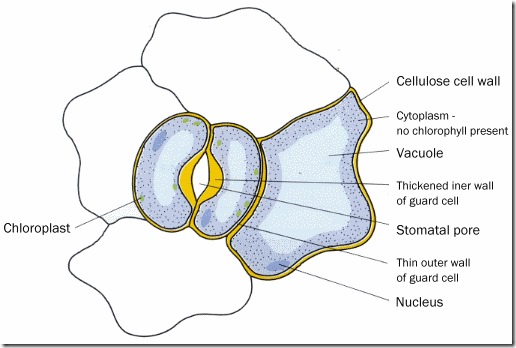
Types of Stomata
Different classifications of stoma types exist. One of them is the classification of Metcalfe and Chalk (1950), based on the number and arrangement of the subsidiary cells that surround the two guard cells. According to them, stomata are of seven kinds. They are as follows:
1. Anomocytic (irregular-celled)
Anomocytic stomata have guard cells that are surrounded by a limited number of subsidiary cells that have the same size, shape, and arrangement as the rest of the epidermal cells. These are also called the ranunculaceous type. This type of stomata can be found in more than a hundred dicot families including Apocynaceae, Boraginaceae, Chenopodiaceae, and Cucurbitaceae.
2. Anisocytic (unequal-celled)
In this type, the stoma has guard cells that are surrounded by three unequally sized subsidiary cells of which one is distinctly smaller than the other two. It is also called the cruciferous type. This type of stomata can be found in more than thirty dicot families, such as Brassicaceae, Solanaceae, and Crassulaceae.
3. Paracytic (parallel-celled)
Paracytic stomata have one or more subsidiary cells parallel to the opening between the guard cells. The subsidiary cells may reach beyond the guard cells or not. These are also called the rubiaceous type. This type of stomata can be found in more than a hundred dicot families including Rubiaceae, Convolvulaceae, and Fabaceae.
4. Diacytic (cross-celled)
Diacytic stomata have guard cells surrounded by two subsidiary cells, that each encircle one end of the opening and contact each other opposite to the middle of the opening. These are sometimes called the caryophyllaceous type. This type of stomata can be found in more than ten dicot families such as Caryophyllaceae and Acanthaceae.
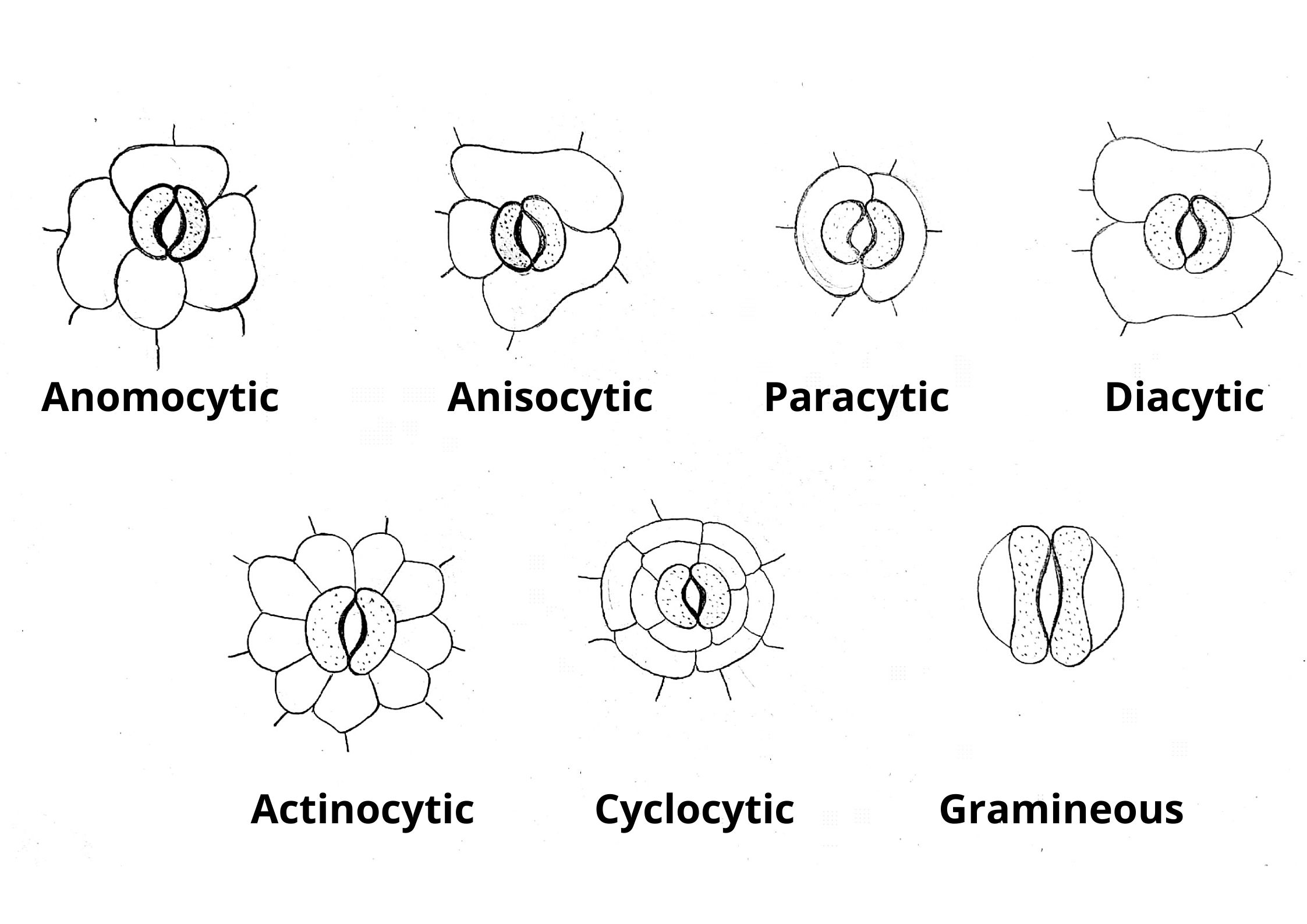
5. Actinocytic (star-celled)
In this type, the stomata have guard cells that are surrounded by at least five radiating cells forming a star-like circle. This is a rare type of stomata that can for instance be found in the family Ebenaceae.
6. Cyclocytic (ring-celled)
This type of stomata is surrounded by four or more subsidiary cells forming a narrow ring around the guard cells. Examples: Palmae, Pandanus, Cyclanthaceae.
7. Gramineous (grass-like)
Gramineous or graminoid stomata have two guard cells surrounded by two lens-shaped subsidiary cells. The guard cells are narrower in the middle and bulbous on each end. This middle section is strongly thickened. The axis of the subsidiary cells is parallel to the stoma opening. This type can be found in monocot families including Poaceae and Cyperaceae.
Functions of Stomata
- Stomata play a major role in gaseous exchange in plants with the atmosphere.
- The main function of stomata is to allow for the uptake of carbon dioxide and the release of oxygen during photosynthesis.
- During respiration, plants receive oxygen and release carbon dioxide through stomata.
- Most of the transpiration takes place through the stomata. Transpiration is the process of removing the excess water in the form of water vapor.
- Stomata limit the loss of water due to evaporation by regulating their opening and closing mechanism.
Related Articles
References
- Stoma from Wikipedia
- Types of Stomata in Plants from Plantscience4u
 Plantlet The Blogging Platform of Department of Botany, University of Dhaka
Plantlet The Blogging Platform of Department of Botany, University of Dhaka
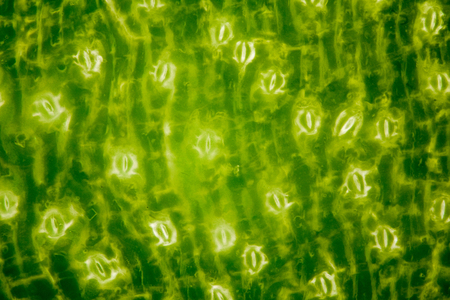

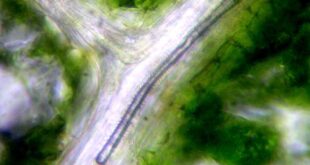

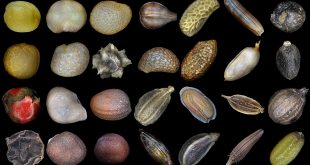

Helpful
I’m glad to hear that. Thank you for your feedback.
Well organised. I really liked it
Thank you so much for your kind appreciation💚.
Really nice to read. 💙
it was helpful to understanding types of stomata. thank you